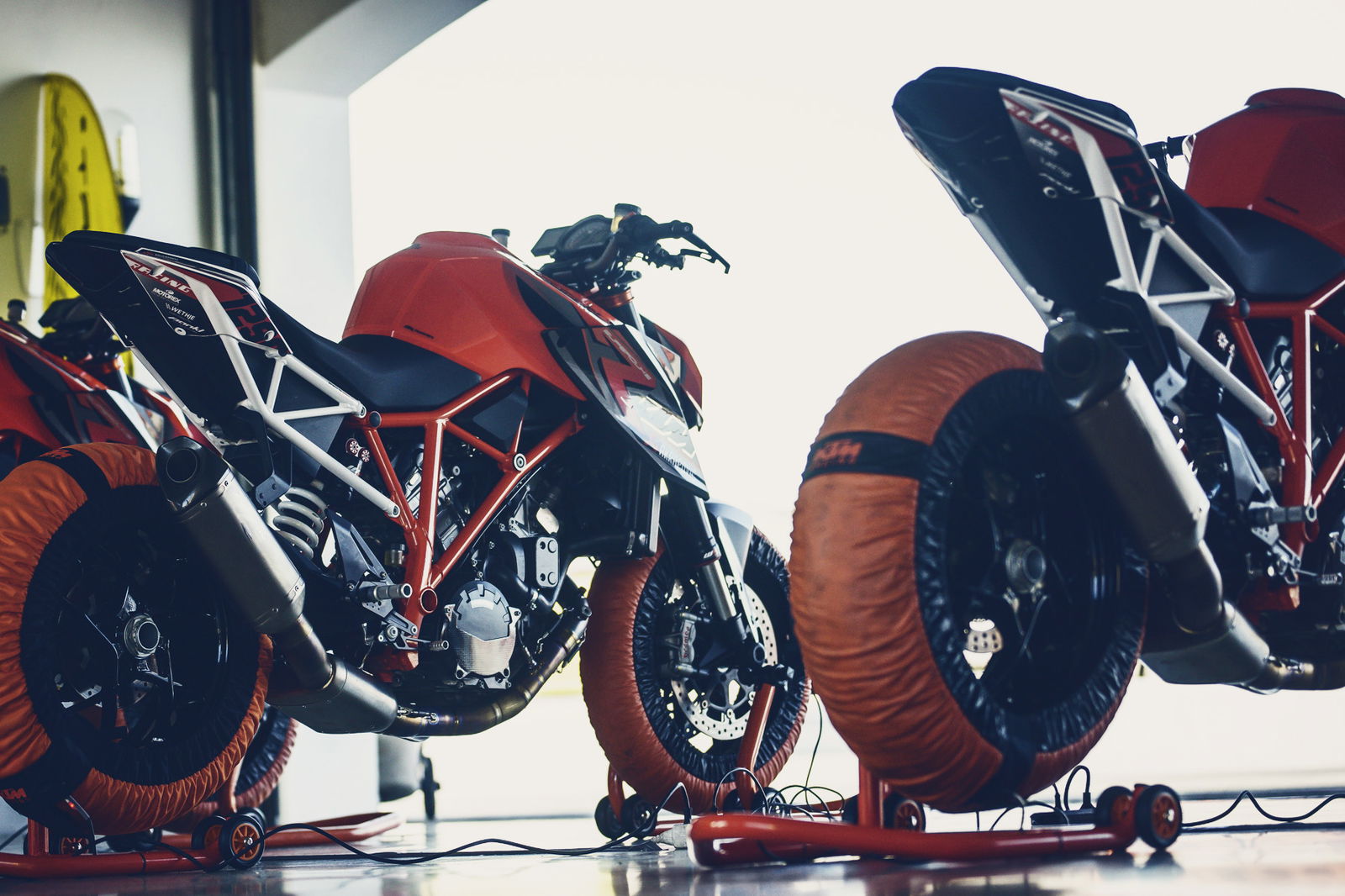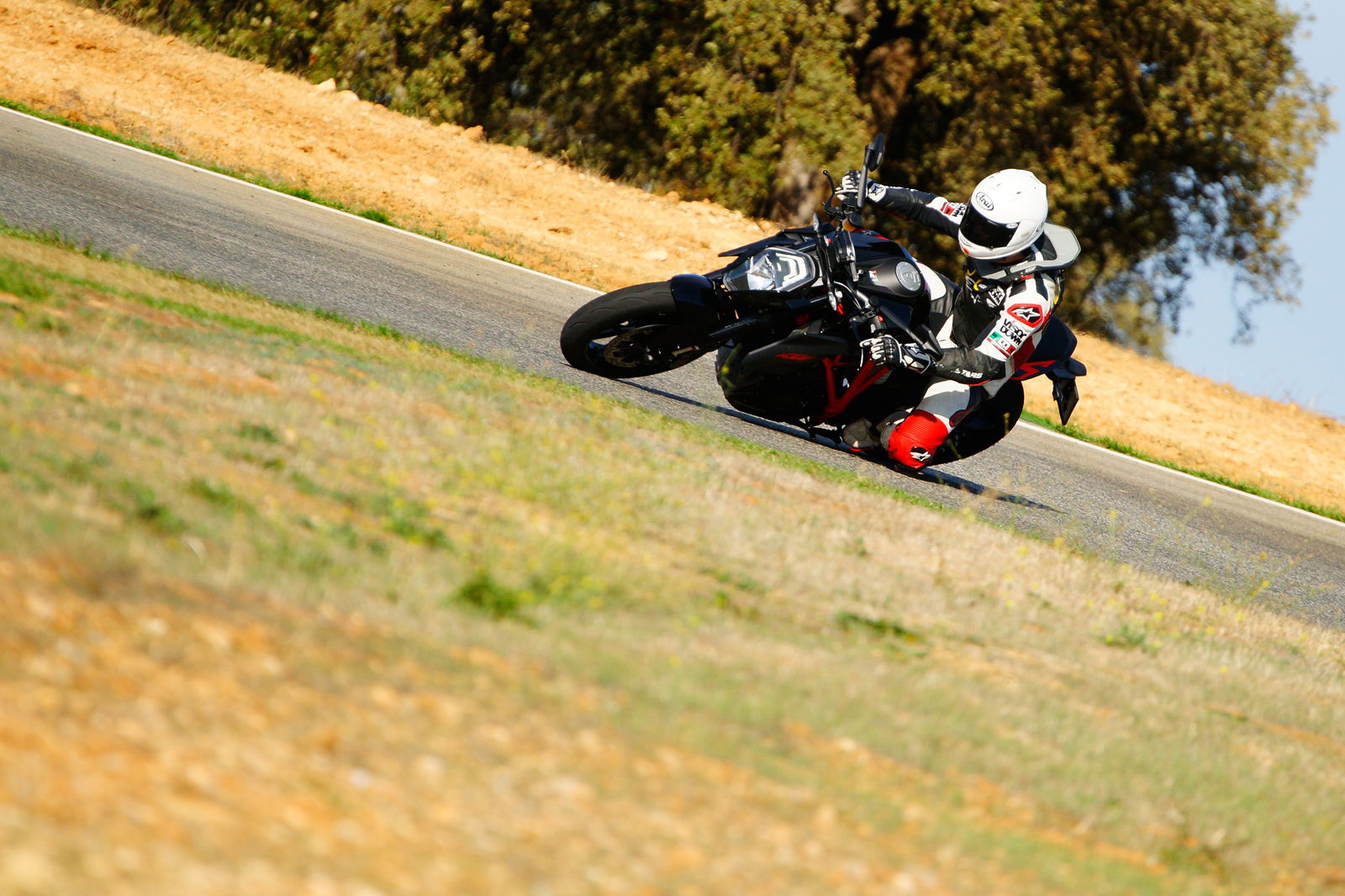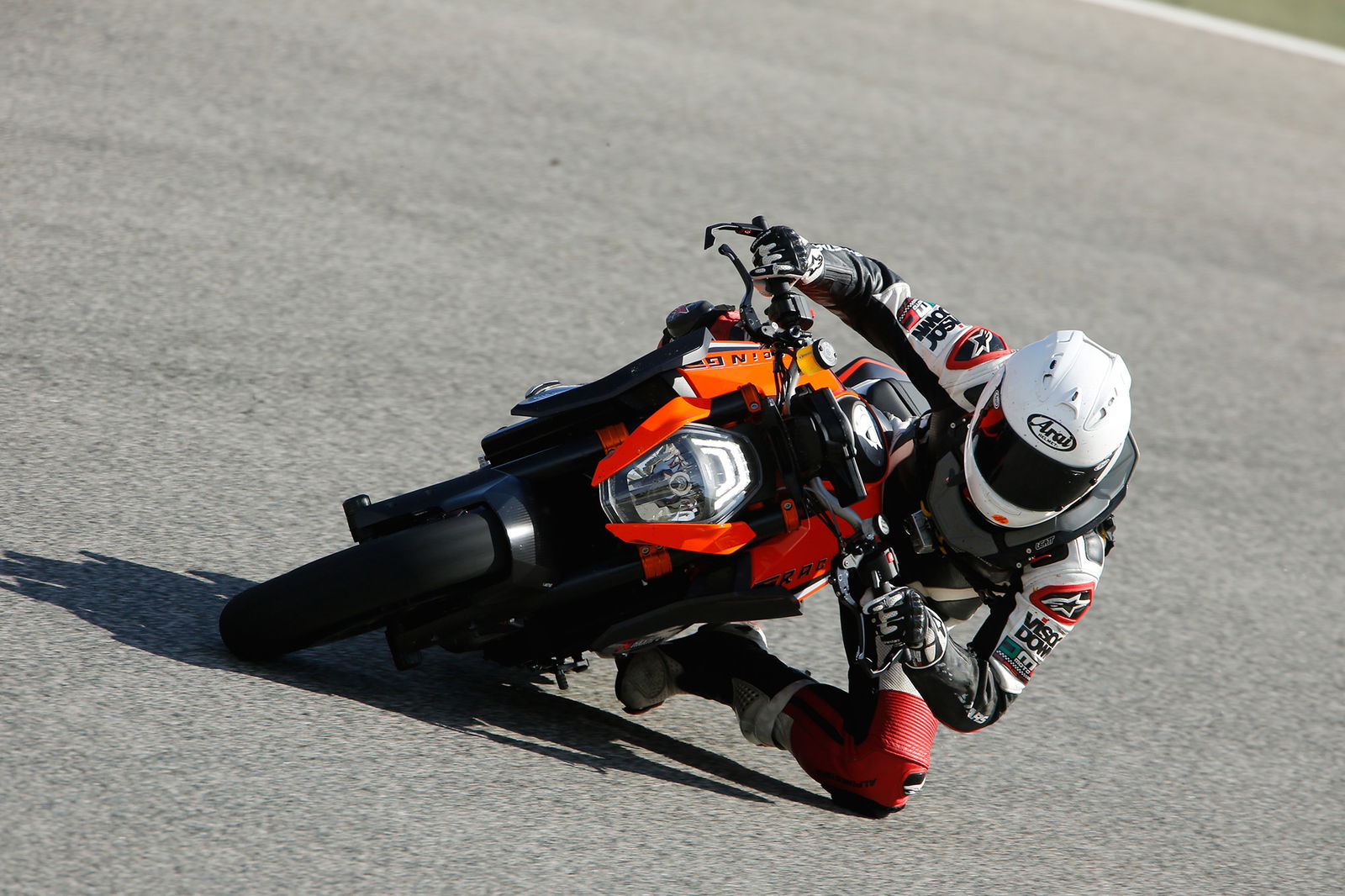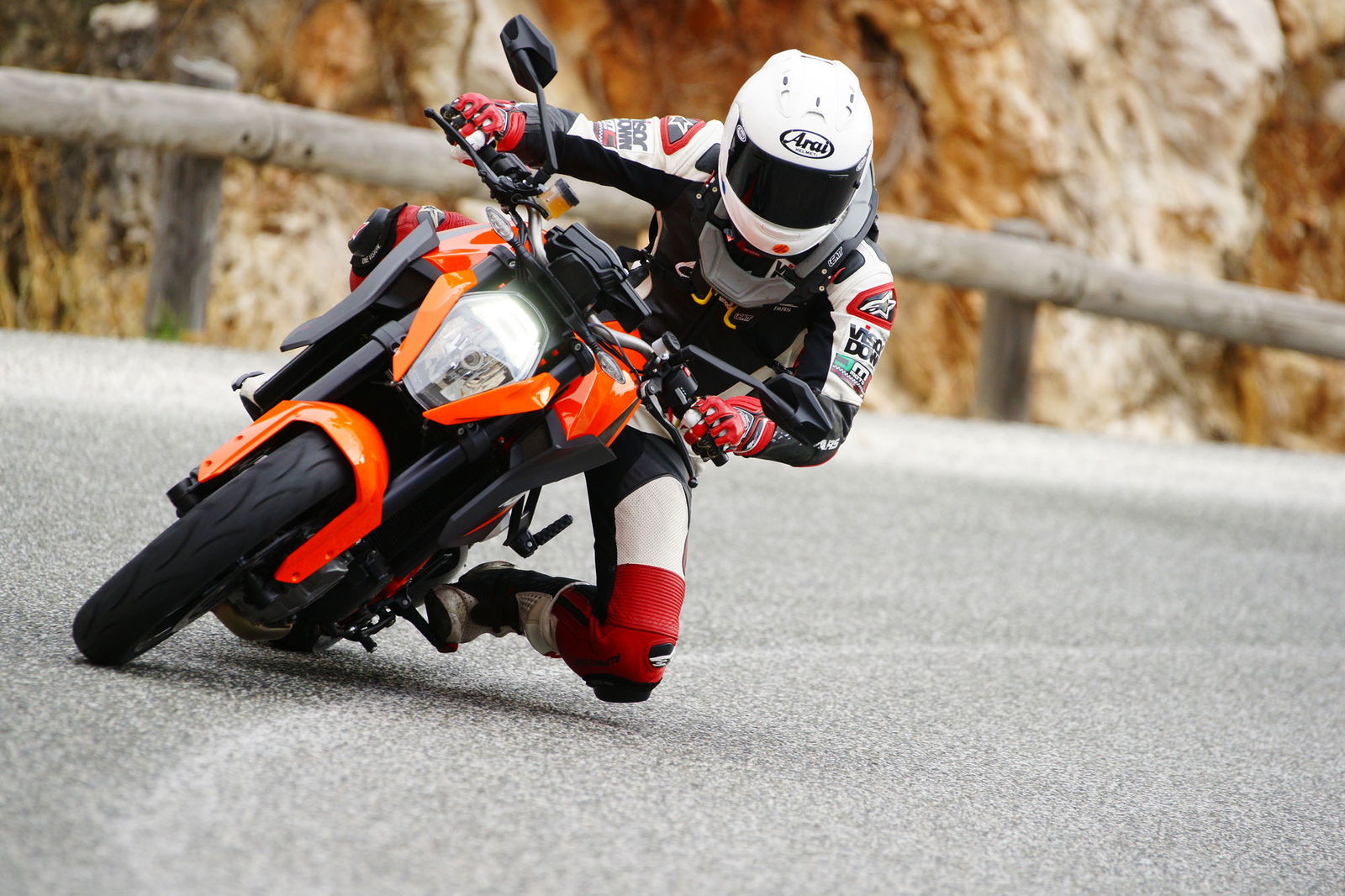Track review: KTM 1290 Super Duke R
We ride the stock bike on track and a slick-shod version that's had the power parts catalogue thrown at it. It's a different animal.


Is a tangerine scary? Let's be honest, of course it isn't.
First up, we rode the stock 1290 on track. It was as sweet as a tangerine and despite the 1,301cc engine, about as intimidating as a tangerine too. The bike was absolutely as you'd get it from the showroom, except with the fully-adjustable suspension, slightly adjusted. Firmed up, in fact but it didn't feel too far away from standard. We rode the bike with the track settings dialed in, a good 50 miles from the hotel to the track and no-one lost a filling.
The stock bike is well setup to handle faster track riding. It's not a race bike but It's no sloppy, apex-missing, under-braked handful either. The WP suspension takes it in its stride, the Brembo monobloc brakes don't fade and you can circulate at a rather decent pace without trying that hard. However, when you do try hard, apart from the suspension feeling slightly lazy (which can always be dialled out) the tyres to let you know that, if it's all the same to you, they'd rather not have to cope with a 150-horsepower kick in the nads three times every minute.
The Dunlop SportSmart2 tyres that are fitted to the stock bike are great, (you can read our full Dunlop SportSmart 2 review here) but they have their limits and on a bike as capable as the 1290 Super Duke R, the SportSmart2s have to work hard to keep up. I didn't have any moments but plenty of movement from the tyre. The 1290 Super Duke R is a bike so effortless, than you'll be guilty of carrying more in and out of every corner than you realised.
The 'Race' version
Hard to believe a bike could feel so different. KTM prepared a 'race' version of the 1290 Super Duke R, fitted with Dunlop KR108 slicks, an Akrapovic Evo exhaust and top-end WP suspension.
With this thing underneath you on a trackday, you'd be able to overtake anyone. If you couldn't overtake them, well just ride over them. It's an animal.
The bike felt so much stiffer than the road bike, there was no waiting for the suspension to settle, especially in the transition through fast chicances. There was no wandering off line. The KR108 slicks felt like they made the most amount of difference, giving me more confidence to brake a little later and deeper but none of that is any use if the suspension can't stand up to the challenge.
The Akrapovic Evo exhaust allows the already fast-revving 1290 rev ever faster and harder. I think you'll struggle to get that through most trackday noise limits which is a shame because anyone you're about to overtake will think a Lancaster bomber is about to land on their head.
The bike was in SPORT mode, the map was no different to the road bike but the exhaust helped pep things up a bit. It wasn't in any way a savage beast, just that bit easier to get the engine wound up.
We only got four-frantic laps on the 'Race' 1290 and believe me, it was hard enough holding on, let alone taking anything in. I'm sure I had it in Supermoto mode, with the front ABS on and the rear ABS off, but a couple of times in hard braking zones, I swear the ABS chipped in. I should have switched it off completely, you just don't need it on track.
Is a tangerine scary? If it's just left a catapult and it's about to smack you in the face then yes, it is.
Time for the numbers
The 'Race' version we rode had three key ingredients that improved performance: the Dunlop KR108 slicks (£400), Akrapovic Evo exhaust (£1600) and a WP front-fork cartridge kit and WP race shock (£1250, £1000).
That's roughly £4,250 in total.
The other parts fitted include: Adjustable brake and clutch lever, rearsets, frame protectors, racing filler cap, brake and clutch guards, carbon guards for the clutch, engine, exhaust and chain and the racing sticket kit.
That lot totals around £1,700.
Which means the bike I rode would cost you in the region of £20,000.
It's silly money but if you've got it, then why not?




